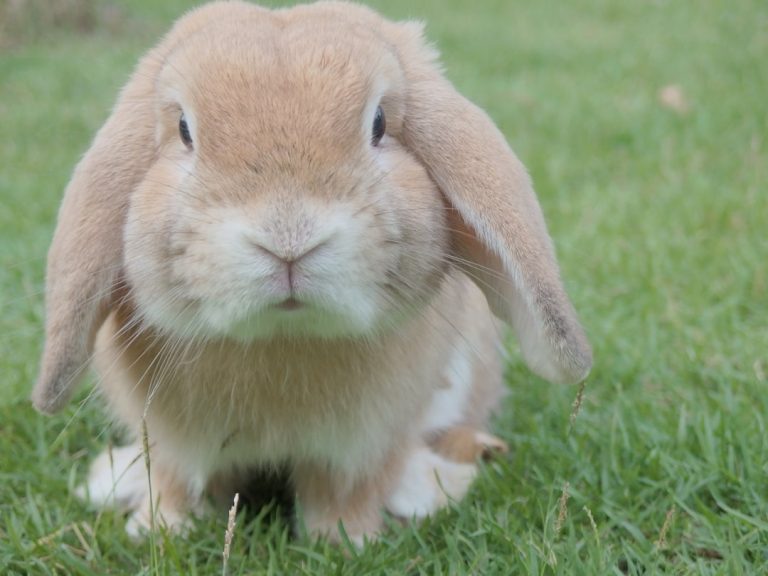
In recent years, the beauty industry has witnessed a remarkable surge in demand for skilled barbers, hairstylists, and cosmetologists. This trend can be attributed to a variety of factors, including the increasing emphasis on personal grooming and self-care among individuals of all ages. As societal norms evolve, more people are recognizing the importance of looking and feeling their best, leading to a heightened interest in professional grooming services.
Additionally, the rise of social media platforms has played a pivotal role in shaping beauty standards and trends, prompting individuals to seek out professionals who can help them achieve their desired looks. This growing awareness of personal aesthetics has created a robust market for beauty services, resulting in a significant increase in job opportunities within the field. Moreover, the beauty industry is not just limited to traditional haircuts and styling; it encompasses a wide array of services that cater to diverse clientele.
From intricate hair coloring techniques to specialized skincare treatments, the scope of services offered by barbers and cosmetologists has expanded dramatically. This diversification has further fueled the demand for professionals who possess a broad skill set and can adapt to the ever-changing trends in beauty. As consumers become more discerning about their grooming choices, they are increasingly inclined to invest in high-quality services provided by trained experts.
Consequently, the beauty industry is poised for continued growth, making it an attractive career option for those looking to enter a dynamic and rewarding field.
Key Takeaways
- The demand for barbers, hairstylists, and cosmetologists is on the rise due to the increasing focus on personal grooming and appearance.
- Education and training requirements for a career in the beauty industry vary, but typically include completing a state-approved cosmetology program and obtaining a license.
- Specializations and career paths for barbers, hairstylists, and cosmetologists include hair cutting and styling, coloring, makeup artistry, and skincare.
- Job outlook in the beauty industry is positive, with a projected growth in employment opportunities, and salary expectations can vary based on experience, location, and clientele.
- Entrepreneurial opportunities for barbers, hairstylists, and cosmetologists include opening their own salon or freelance work, which allows for creative freedom and potential for higher earnings.
Education and Training Requirements for a Career in the Beauty Industry
Embarking on a career in the beauty industry necessitates a solid foundation of education and training. Most aspiring barbers, hairstylists, and cosmetologists are required to complete a formal training program at an accredited cosmetology school. These programs typically cover a comprehensive curriculum that includes theoretical knowledge as well as practical skills.
Students learn about hair cutting techniques, color theory, skin care practices, and sanitation protocols, among other essential topics. In addition to classroom instruction, hands-on experience is crucial; students often practice their skills on mannequins and real clients under the supervision of experienced instructors. This combination of theory and practice equips graduates with the necessary competencies to excel in their chosen profession.
After completing their education, aspiring beauty professionals must also obtain licensure to practice legally. Licensing requirements vary by state or country but generally involve passing written and practical examinations that assess a candidate’s knowledge and skills. This regulatory framework ensures that only qualified individuals enter the industry, thereby safeguarding public health and safety.
Furthermore, many states require continuing education to maintain licensure, which encourages professionals to stay updated on the latest trends, techniques, and products in the ever-evolving beauty landscape. By investing time and effort into their education and training, individuals can position themselves for success in a competitive job market.
Specializations and Career Paths for Barbers, Hairstylists, and Cosmetologists

The beauty industry offers a plethora of specializations and career paths for those seeking to carve out their niche. Barbers, for instance, may choose to focus on traditional barbering techniques such as straight razor shaves and classic cuts or delve into modern styles that incorporate fading and intricate designs. Similarly, hairstylists can specialize in various areas such as color correction, bridal styling, or even avant-garde fashion looks for runway shows.
Each specialization requires a unique set of skills and knowledge, allowing professionals to tailor their careers according to their interests and strengths. This diversity not only enhances job satisfaction but also enables individuals to stand out in a crowded marketplace. Cosmetologists have even broader opportunities for specialization beyond hair services.
Many choose to expand their expertise into skincare, makeup artistry, or nail technology. For example, a cosmetologist may become certified in advanced skincare treatments like chemical peels or microdermabrasion, allowing them to offer comprehensive beauty services that address clients’ diverse needs. Additionally, some professionals opt to pursue careers in education or product development within the beauty industry.
By leveraging their hands-on experience and knowledge, they can contribute to training the next generation of beauty professionals or help create innovative products that enhance the client experience. The multitude of career paths available ensures that individuals can find fulfilling roles that align with their passions.
Job Outlook and Salary Expectations in the Beauty Industry
| Job Title | Job Outlook | Salary Expectations |
|---|---|---|
| Hairstylist | 5% growth from 2019-2029 | Median salary of 26,090 per year |
| Esthetician | 17% growth from 2019-2029 | Median salary of 34,090 per year |
| Makeup Artist | 19% growth from 2019-2029 | Median salary of 34,190 per year |
| Nail Technician | 19% growth from 2019-2029 | Median salary of 25,770 per year |
The job outlook for barbers, hairstylists, and cosmetologists remains promising as the demand for beauty services continues to grow. According to the U.S. Bureau of Labor Statistics (BLS), employment in this sector is projected to increase significantly over the next decade.
Factors contributing to this positive outlook include an aging population seeking grooming services and an increasing number of men embracing barbershop culture. Additionally, as more individuals prioritize self-care and personal grooming as part of their lifestyle choices, the need for skilled professionals will only intensify. This trend suggests that those entering the beauty industry can expect ample job opportunities upon graduation.
In terms of salary expectations, earnings can vary widely based on factors such as location, experience level, and specialization. While entry-level positions may offer modest salaries, experienced professionals with established clientele can command significantly higher wages. According to BLS data, the median annual wage for hairstylists and cosmetologists was around $30,000 as of 2021; however, top earners in metropolitan areas or those with specialized skills can earn upwards of $60,000 or more annually.
Additionally, many beauty professionals supplement their income through tips and commissions on product sales, further enhancing their overall earnings potential. As individuals build their reputations and client bases over time, they can expect their financial prospects to improve substantially.
Entrepreneurial Opportunities for Barbers, Hairstylists, and Cosmetologists
The beauty industry is ripe with entrepreneurial opportunities for barbers, hairstylists, and cosmetologists looking to establish their own businesses. Many professionals choose to open their own salons or barbershops after gaining experience in established establishments. This path allows them to create an environment that reflects their personal style while offering services tailored to their target clientele.
Owning a business also provides greater flexibility in terms of scheduling and service offerings, enabling professionals to cultivate a unique brand identity that resonates with customers. However, entrepreneurship requires not only technical skills but also business acumen; successful salon owners must navigate marketing strategies, financial management, and customer service effectively. In addition to traditional brick-and-mortar establishments, beauty professionals can explore alternative business models such as mobile salons or freelance services.
Mobile salons cater to clients who prefer the convenience of receiving services at home or special events like weddings or parties. This flexibility can be particularly appealing in today’s fast-paced world where time is often at a premium. Freelancing allows professionals to work independently while collaborating with various clients or brands on specific projects such as photoshoots or fashion shows.
By embracing these entrepreneurial avenues, barbers, hairstylists, and cosmetologists can diversify their income streams while pursuing their passion for beauty.
The Importance of Networking and Building a Clientele in the Beauty Industry

The Power of Networking in the Beauty Industry
In the competitive landscape of the beauty industry, networking plays a crucial role in establishing a successful career as a barber, hairstylist, or cosmetologist. Building relationships with fellow professionals can lead to valuable opportunities for collaboration and referrals. Attending industry events such as trade shows or workshops allows individuals to connect with peers and learn from experienced mentors who can provide guidance on navigating challenges within the field.
Expanding Opportunities through Strategic Connections
Additionally, networking with suppliers and product representatives can open doors to exclusive training sessions or access to new products that enhance service offerings. This can be particularly beneficial for beauty professionals looking to stay up-to-date with the latest trends and technologies in the industry.
Building a Loyal Client Base
Equally important is the process of building a loyal clientele. In an industry where word-of-mouth referrals are paramount, cultivating strong relationships with clients is essential for long-term success. Providing exceptional service consistently fosters trust and encourages clients to return while also recommending services to friends and family.
Amplifying Your Reach through Social Media
Utilizing social media platforms effectively can further amplify this effort; sharing before-and-after photos or showcasing unique styles can attract new clients while keeping existing ones engaged. By prioritizing both networking and client relationship-building strategies, beauty professionals can create a solid foundation for sustained growth in their careers.
Tips for Success in the Competitive Beauty Industry
Achieving success in the competitive beauty industry requires more than just technical skills; it demands dedication, adaptability, and a commitment to continuous learning. One key tip for aspiring barbers, hairstylists, and cosmetologists is to stay abreast of current trends and techniques through ongoing education. Attending workshops or enrolling in advanced courses not only enhances skill sets but also demonstrates professionalism to clients who seek knowledgeable experts in their field.
Additionally, embracing new technologies—such as online booking systems or social media marketing—can streamline operations while attracting a broader clientele. Another vital aspect of success lies in cultivating a positive personal brand that resonates with clients. This involves not only showcasing technical expertise but also embodying qualities such as approachability and authenticity.
Clients are more likely to return when they feel valued and understood; therefore, actively listening to their needs and preferences is paramount. Furthermore, maintaining an organized workspace contributes significantly to client satisfaction; cleanliness reflects professionalism while creating an inviting atmosphere that encourages repeat visits. By combining technical proficiency with strong interpersonal skills and effective branding strategies, beauty professionals can thrive amidst competition while building fulfilling careers in this vibrant industry.
If you’re exploring career options in personal care and service industries, you might also be interested in learning about the roles of receptionists, who often work closely with professionals like barbers, hairstylists, and cosmetologists. Receptionists are crucial in managing client appointments, handling inquiries, and ensuring smooth operations within salons and spas. To gain more insight into the responsibilities and career paths of receptionists, you can read a related article that provides detailed information on this profession. For more details, visit Receptionists: Careers in the USA.
FAQs
What is the job outlook for barbers, hairstylists, and cosmetologists in the USA?
The job outlook for barbers, hairstylists, and cosmetologists in the USA is projected to grow 19 percent from 2020 to 2030, much faster than the average for all occupations.
What are the educational requirements to become a barber, hairstylist, or cosmetologist in the USA?
In the USA, barbers, hairstylists, and cosmetologists are required to complete a state-approved program in a licensed barber or cosmetology school. These programs typically take 9 months to 2 years to complete.
What are the licensing requirements for barbers, hairstylists, and cosmetologists in the USA?
In the USA, barbers, hairstylists, and cosmetologists are required to be licensed in the state in which they work. Licensing requirements vary by state but generally include completing a state-approved training program and passing a written and practical exam.
What is the median pay for barbers, hairstylists, and cosmetologists in the USA?
The median pay for barbers, hairstylists, and cosmetologists in the USA was $26,090 per year in 2020.
What are the typical work environments for barbers, hairstylists, and cosmetologists in the USA?
Barbers, hairstylists, and cosmetologists in the USA typically work in barbershops, salons, or spas. Some may also be self-employed and rent booth space in a salon.



